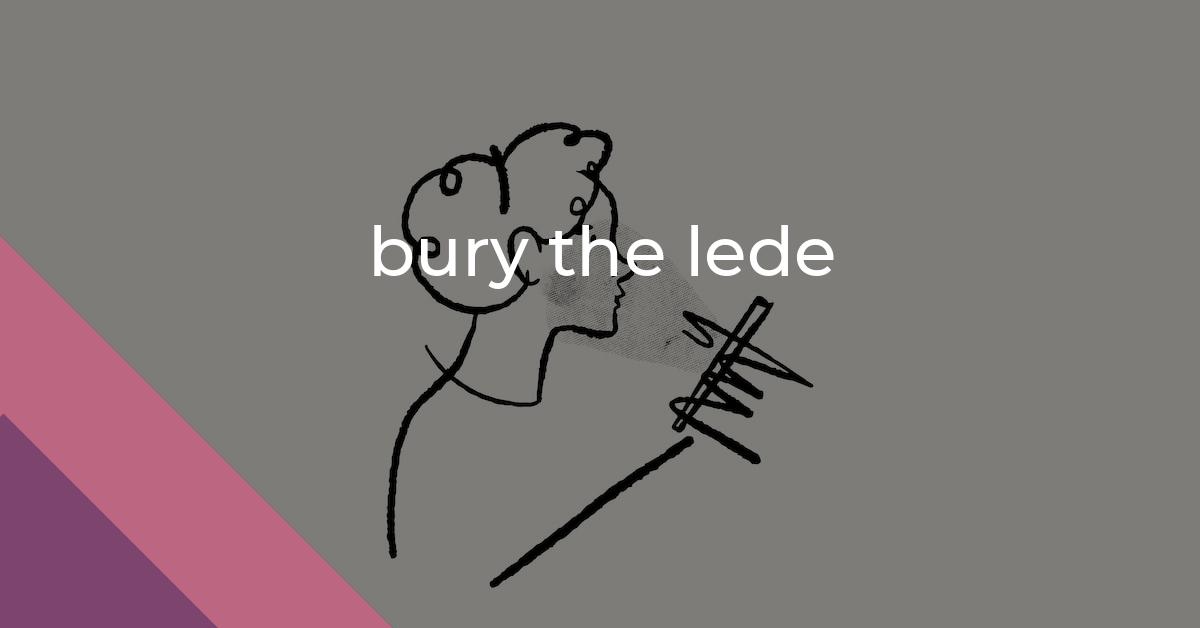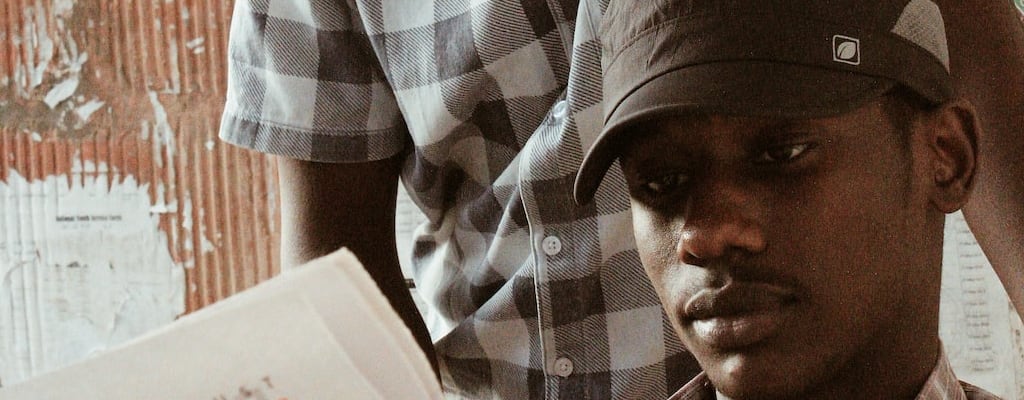bury the lede: Idiom Meaning and Origin
What does ‘bury the lede’ mean?
The idiom "bury the lede" means to fail to highlight the most important or interesting part of a story or news article, usually by placing it at the end or not giving it enough emphasis. It refers to the practice of hiding or downplaying the central point, resulting in a less effective delivery of information.

Idiom Explorer
The idiom "lead up to" means to precede or prepare for something, typically an event or action. It implies a progression or sequence of events that culminate in the main event or action.
The idiom "keep a low profile" means to avoid attracting attention or publicity, and to remain inconspicuous or discreet in one's actions or behavior.
The idiom "in the limelight" means to be the center of attention or to be in a prominent position. It originates from the old theater practice of using a bright spotlight or "limelight" to highlight the central performer on stage.
The idiom "hiding to nothing" means to be in a situation where one is bound to fail or face certain defeat, regardless of the efforts made. It implies a futile or hopeless endeavor with no chance of success or favorable outcome.
The idiom "hide one's light under a bushel" means to conceal or downplay one's talents, abilities, or achievements.
The idiom "hide in plain sight" means to conceal oneself or something in a way that is not obvious or easily noticed, even though it is in a highly visible or noticeable place.
The idiom "headlines" refers to the prominent and attention-grabbing text that appears at the top of a newspaper or news article. It is used metaphorically to indicate something that is of great significance or importance.
The idiom "gloss over" means to ignore, downplay or conceal a problem, mistake, or negative aspect of something, often with a superficial treatment or explanation.
The idiom "give the lie to" means to disprove or contradict something, revealing it to be untrue. It is often used when evidence or facts are presented that directly oppose a statement or belief.
The idiom "get down to bedrock" means to reach the fundamental or essential aspects of something, stripping away all unnecessary layers or details.
The Art of Concealing
Burying the lede, also known as burying the lead, is an idiom in American English commonly used in journalism. It refers to downplaying or hiding the most important or interesting information within a story or article by placing it at the end or not giving it the attention it deserves.
The term comes from the practice of burying lead, which refers to the printing process. In this process, typesetters would place small metal type pieces, called "lede," in a wooden tray known as a "galley" to create words and sentences. When a story or article was printed, the emphasis was often placed on the lead, or the first paragraph or sentence, to capture the reader's attention and convey the main point of the piece.
In journalism, it is crucial to quickly engage the reader and convey the most important information upfront. However, some writers or editors may choose to bury the important details under less significant information. This approach can result in a loss of reader interest or comprehension. The idiom "bury the lede" serves as a reminder to writers and editors to prioritize the key details instead of burying them within the text.
Burying the lede can be considered a form of rhetorical device. By withholding important information until later in the story, it generates suspense or surprise. This technique also allows the writer to build tension or create a climax by delaying the most impactful details. Using this technique effectively requires a deep understanding of the principles of journalistic storytelling, where a strong lead often determines the success of the article.
While the idiom "bury the lede" is primarily associated with journalism, its usage has expanded beyond news reporting. It has found its way into everyday conversations, particularly when discussing situations where the most important information is concealed or not given due prominence.
In relation to other idioms, "bury the lede" shares similarities with "bury the lead" and "cover up." Both idioms convey the act of concealing or downplaying important information. However, "bury the lede" specifically refers to the context of journalism.
On the other hand, "break the story" and "headlines" are related idioms that have a different focus. "Break the story" refers to being the first to report or publish a news story or piece of information. It signifies an achievement in journalism, while "headlines" refer to the attention-grabbing titles or summaries of news articles that are designed to entice readers to explore the full piece.
Using these idioms effectively in writing and conversations adds depth and nuance to communication. Being able to recognize when someone is burying the lede or breaking a story can help readers and listeners better understand the purpose and impact of the information being presented.
To summarize, "bury the lede" is an idiom that captures the concept of hiding or downplaying significant information within a story or article. It is commonly used in journalism but has also found its way into everyday conversations. Understanding this idiom is key for effective communication and storytelling, enabling writers and speakers to prioritize and convey the most crucial details without burying them within a sea of lesser importance.
Example usage
1. The journalist wrote an entire article about a local farmer's market without mentioning that a famous celebrity had been shopping there. He really buried the lede!
2. The news anchor began the segment by discussing the weather and traffic, completely burying the lede about a major breakthrough in cancer research.
3. In a suspenseful book, the author strategically buried the lede about the main character's secret identity until the very end of the story.
More "Journalism" idioms



